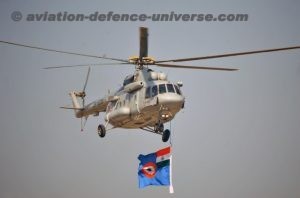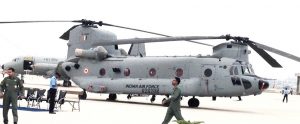
By Lt General Balli Pawar (Retd.)
New Delhi. 04 October 2020. The Indian and Chinese armies continued to be locked in a bitter standoff at multiple locations in Eastern Ladakh ever since 5 May. The tensions escalated manifold after the violent clashes between troops on both sides in the Galwan Valley on the intervening night of 15-16 June and the current situation remains extremely tense and precarious. This has been further accentuated with the Indian Army’s pre-emptive action to occupy certain dominant features on the southern banks of the Pangong Tso with live firing being resorted to by both sides for the first time in many years. The area of Eastern Ladakh represents the most inhospitable terrain, with altitudes ranging from 14000 to 18000 feet where survival itself is a challenge, leave alone the fighting. Talks at the Military and Diplomatic levels though ongoing are likely to yield very little, with the reality pointing to a prolonged standoff which is most likely to continue through the winter. In fact as I write this piece the Army and the Air force have undertaken the biggest logistics exercise to ensure adequate winter stocking is in place before the harsh winter sets in – the helicopters are playing a key role in this exercise.
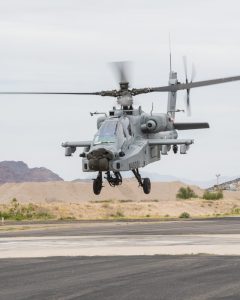
Before I dwell on the role and capability of the rotary wing assets on both sides, it is important to understand that high altitudes and harsh climatic conditions/terrain in this area impose substantial constraints on both the man and machine and changes the very fundamentals of warfare. While the summer season is comparatively better excepting for the extremely high wind speeds, the winter further adds to the adversity with temperatures in the region of minus 30 to minus 40 degree centigrade, requiring specialised equipment and clothing to keep the force operational – Siachen is a apt example of the same. The constraints of altitude, terrain and climate are most severe in the Ladakh/Aksai Chin region than any other area along the LAC. Here one is reminded of the famous quote of Clausewitz, ‘in war the simplest things become very difficult’ – add to this the environmental conditions enumerated above and the stark reality of a conflict in this region becomes clearly visible.
Helicopter Operations in Eastern Ladakh
Suffice it to say the above conditions also have a major impact on helicopter operations as the helicopter capability also gets degraded to a large extent and more so in summer season due to hot and high conditions. But the helicopter despite its limitations, remains the best bet for rapid deployment and transportation of troops, equipment, weapon systems, warlike stores including ammunition and fuel in this inhospitable terrain. Redeployment of troops, direction of artillery fire, forward air controller (FAC), search and rescue and casualty evacuation are other essential and critical tasks that the helicopters can carry, out especially during conflict. It must be noted that a majority of these tasks would require to be carried out during night and in high altitude mountainous terrain, which in itself is a major challenge, even though all modern day helicopters have night fighting capability, but not all of them are capable of operating at these altitudes. This was amply demonstrated during the Kargil conflict in 1999 where the terrain conditions were almost similar, with only the Cheetah and the Mi-17 helicopters capable of operating at those altitudes at that time. These warhorses diligently carried out all the tasks enumerated above by day and night, despite the danger from the SAMs and small arms fire – one Mi-17 was lost to a SAM hit during the conflict.
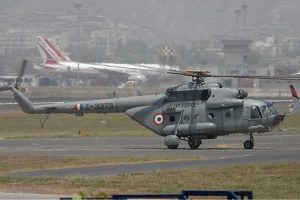
Now that we have tanks and light armoured carriers also inducted into the Eastern Ladakh region by the PLA, the attack and armed helicopters can play a very significant role, provided they have the capability to operate at these altitudes. During the Kargil conflict the Mi 25/Mi 35 held with the air force were not capable of operating at these altitudes and hence were not used.
Another important facet of helicopter operations in high altitudes is training of pilots who would require specialised training to operate them in these areas. The skills required to fly these helicopters at these altitudes are in complete contrast to those required while flying at sea level irrespective of the pilot’s experience. The main factors which require the pilots attention are the drastic reduction in margin of power available and the sluggish response of the flying controls – helicopter operations in Siachen the highest battlefield in the world is a vivid example of where Indian army and air force helicopters are operating at their extremity ceiling and landing at helipads as high as 19800 feet, a feat unparalleled anywhere in history.
Helicopter Capabilities- China & India
In the numbers game China far outweighs India with regards to holding of all categories of military helicopters but the stark difference comes in the attack category where India is totally outnumbered a mere approximately 40 against 280 in the Chinese inventory – the Indian holding includes the 28 Apaches being inducted some of which are yet to be received.
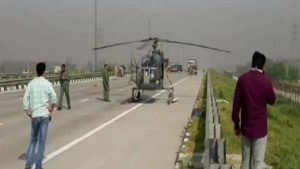
In the light observation category the Cheetah helicopter though aging and vintage and awaiting replacement for over a decade continues to be the lifeline of troops deployed in Siachen and other high altitude areas of Ladakh, Sikkim and Arunachal Pradesh. In fact the induction of the Cheetal helicopter, a modified Cheetah with a much more powerful engine will give a further boost to its high altitude capability but these are limited in numbers. The replacement of this critical asset is nowhere in sight and keeping this fleet serviceable itself is becoming a nightmare. Cheetah’s main role hinges around reconnaissance and surveillance, direction of artillery fire, FAC, resupply of critical warlike stores and casualty evacuation. The best feature about these helicopters that they can land anywhere and do not need a helipad – this was amply demonstrated during the Kargil conflict. The Chinese on the other hand have the Harbin WZ-19 light reconnaissance helicopter which can also be armed and the Changhe Z-11 light utility helicopter. Both should be able to operate at these altitudes but the capability of the armed WZ-19 is suspect.
The biggest trump card India holds is the Advanced Light Helicopter (ALH) in the utility class, capable of operating at altitudes similar to the Cheetah and with greater capacity of troop and load carriage. Being a state of art modern day helicopter it is equipped with a ‘Self Protection Suite’ with a missile warning and chaff dispensing system, which can give it adequate protection from SAMs. The ALH in sufficient numbers are already operating in Siachen and Ladakh areas and will be force multiplier in case of a conflict.
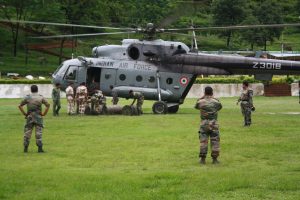
In the Medium Lift Category both India and China are operating the Russian origin Mi-17 helicopters. It is assumed that like India, China would also be operating the latest upgraded version of the Mi-17, the Mi-17 V5 helicopters which have more powerful engines, modern day avionics, glass cockpit and provision to arm with rockets and machine guns. In addition the Chinese also have the home made Z-20 helicopter in this category, which has been seen flying in the area of current standoff-this resembles the American UH-60 Black Hawk. India on the other hand has a very large fleet of Mi-17 V5s which have excellent capability for high altitude operations and are also armed with rockets and machine gun.
In the Heavy lift category the Chinese boasts of the Z-8G large transport helicopter which as per the Global Times is capable of operating at high altitudes and is part of the activity in Eastern Ladakh. However the Z-8G and its predecessor the Z-8 are a copy of French SA 321 Super Frelon which France had sold to China in the late 1970s – the SA 321 Super Frelon is no more in service and this so called acclaimed capability of the Z-8G needs to be taken with a pinch of salt. India on the other hand has recently acquired the Chinook heavy lift helicopter which is a time tested warhorse and is in operation with 19 countries. It is a multirole platform used for transportation of troops, artillery guns and tanks, equipment and fuel. The Chinook is already being used by the Indian military for ferrying heavy equipment and artillery guns along the borders with China and Pak. This is certainly a game changer in India’s favour.
With the Chinese having inducted light tanks in the area of standoff, Attack Helicopters (AH) are expected to play a significant role in case of a conflict. In the AH category the much touted Chinese Z-10 state of art attack helicopter’s capability to operate at these altitudes is suspect due to the underpowered engines. It is due to this basic reason that the Pak army selected the Turkish T-129 ATAK attack helicopter over the Chinese Z-10 – as per reports the Chinese are working on a new engine which is still a faraway dream. On the other hand the HAL developed Light Combat Helicopter (LCH) is basically designed for high altitude operations and has completed all requisite trials and is ready for induction into the army and air force. Unfortunately the LCH is not yet in service, but keeping in mind the current situation its induction needs to be fast tracked. The recent induction of the Apache AH 64E Guardian attack helicopters, the most lethal and modern AH in the world has greatly enhanced the war fighting capability of the Indian military, but being a heavy duty AH its capability to operate in the current environment is not likely, even though as per reports some Apache AH have been moved to forward airbases in Ladakh.
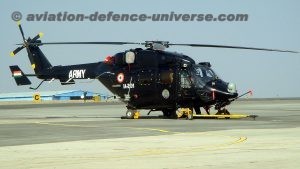
What is of significance is that the armed version of the ALH called ‘Rudra’ has the capability to operate in this environment, but sadly is not fitted with an anti-tank missile. This is due to the DRDO’s failure to produce the air version of the NAG anti tank missile called ‘HELINA’ over the last decade plus. All attempts to procure a suitable anti tank missile ex import have been stonewalled at the behest of the DRDO by the Government of the day with consequences detrimental to operational preparedness. Imagine having a state of art attack helicopter but without the most essential armament, the anti tank missile – hope some action is now taken by the Government to speed up this process or the LCH will also meet the same fate.
Conclusion
While China may have the quantitative edge in the number of different types of helicopters held, most of them do not have the capability to effectively operate at such altitudes because of the underpowered engines. India on the other hand certainly has a qualitative edge with helicopters like the ALH, Mi-17V5 and Chinook already operating extensively in such environments. The Rudra with its armament package of rockets, guns and air to air missiles could be a very effective weapon system in this area despite not have the critical anti tank missile. The biggest advantage that the Indian military has is its experience of flying these machines in far worse terrain and climatic conditions existing in the Siachen Glacier – in fact Army and Air force helicopters regularly operate all along the LAC in Ladakh, Sikkim and Arunachal Pradesh, making the man and machine conditioned for such operations. Helicopters will certainly play a very crucial and critical role in the current standoff or in case of a conflict in this area due to the very nature of the terrain existing. Helicopter operations will be the key to supporting and sustaining the troops deployed in the area and this requirement will become more pronounced in winter months when plummeting temperatures, icy winds and heavy snow fall will add to the existing woes.
(Lt Gen BS Pawar (Retd.) is a Delhi based defence analyst, former Head of the Army Aviation Corps and Commandant School of Artillery. The views in the article are solely the author’s. He can be contacted at editor.adu@gmail.com.)


































